Mysterious stationery. Test 2
New quick-witted test.
Guess which stationery is pictured.
I suggest: the devices in the first and last pictures are not quite clerical, rather about- (only about-) accounting. I find it difficult to formulate from which region the wonder from the first picture (specifically this one was used in agriculture). The mechanism with the ninth picture straight from the store. I won’t say which, otherwise you’ll guess.
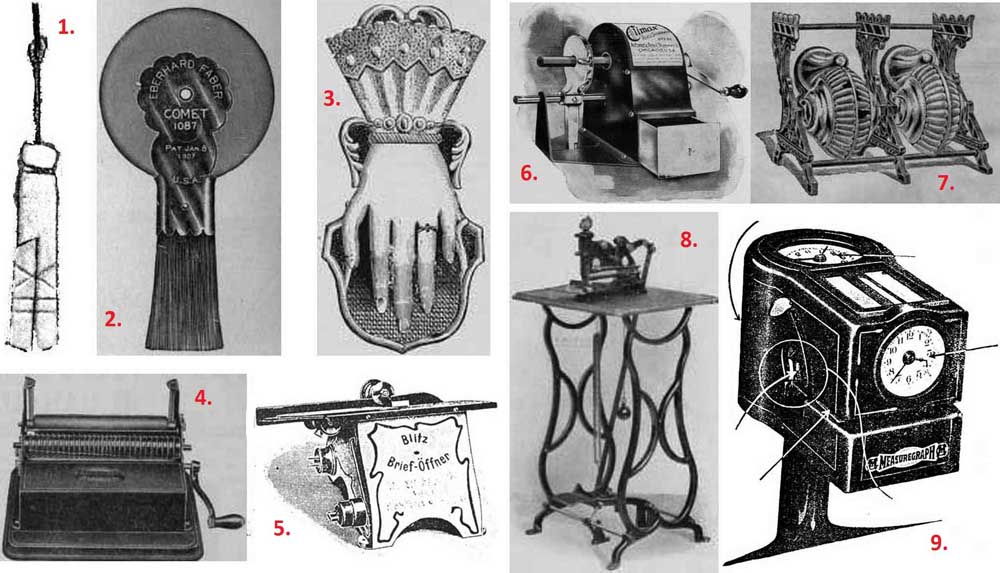
I am sure that when you guessed the proposed devices you did not experience difficulties. Thanks for the quick wits.
Guess which stationery is pictured.
I suggest: the devices in the first and last pictures are not quite clerical, rather about- (only about-) accounting. I find it difficult to formulate from which region the wonder from the first picture (specifically this one was used in agriculture). The mechanism with the ninth picture straight from the store. I won’t say which, otherwise you’ll guess.

See answers
1. Famous folk thing. The names are different: lottery , chip, and others (I didn’t write it down specifically, but now I don’t remember).
Used for identification. A wand was taken, arbitrary nicks were carved on it, then the wand was split along. In order for the owners of two parts to recognize each other, it was enough to fold the wand: if the parts coincided, the identification was considered successful. Impossible to fake, as you know.
Instead of sticks, coins and other items could be used. Spy equipment, in short: you could see that in the movies.
Specifically, this peaceful draw was used to pass the sheepskin. One of the parts was tied to a sheepskin, which was handed over for dressing, so that at the end of processing the peasant could identify his sheepskin. Of course, the master of dressing hides could freely bandage the sticks on the sheepskin, but isn’t it - better than nothing?

2. Just an eraser . And below, as I understand it, a brush to sweep away the crumbs.
I have these erasers heaped, there are round ones, but with a brush only one.

3. Paper clip. Unusual shape in the form of a hand - the hand also confuses.
Here are the clips of more understandable forms:
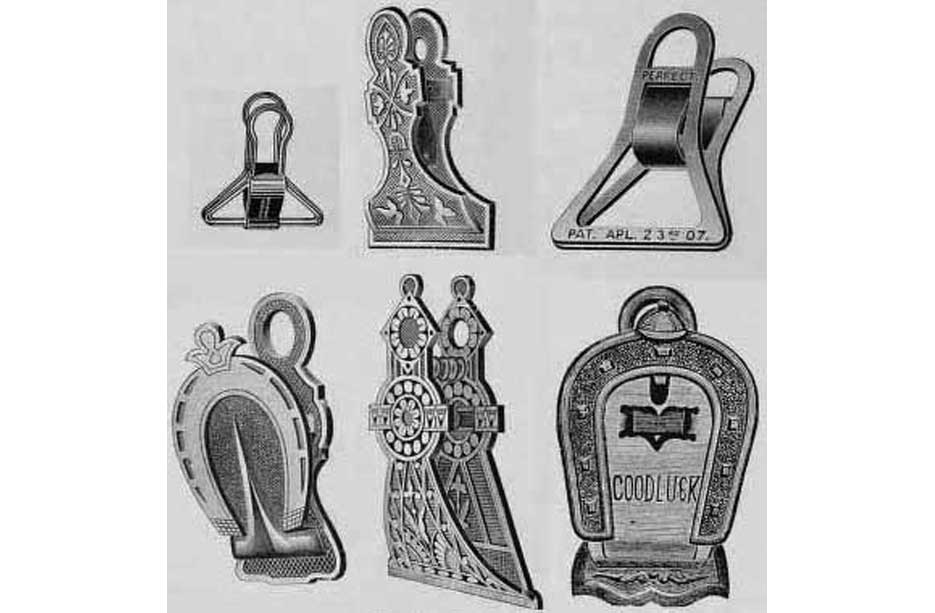
And this is the desktop version:

4.It’s hard to guess, especially since the photo is bad. Almost an arithmometer, only without a keyboard.
This is an envelope sealer .
Full mechanization of work with envelopes. In the first quick-witted test, devices were used to wet envelopes, and these machines, as I understand it, glued wet envelopes by pressing.
Here are other similar devices.
Konvertozakleivatel "Velopost" :

Konvertozakleivatel "Ado" :

Konvertozakleivatel unknown grade (Model F, as it is possible to read on the instrument side):
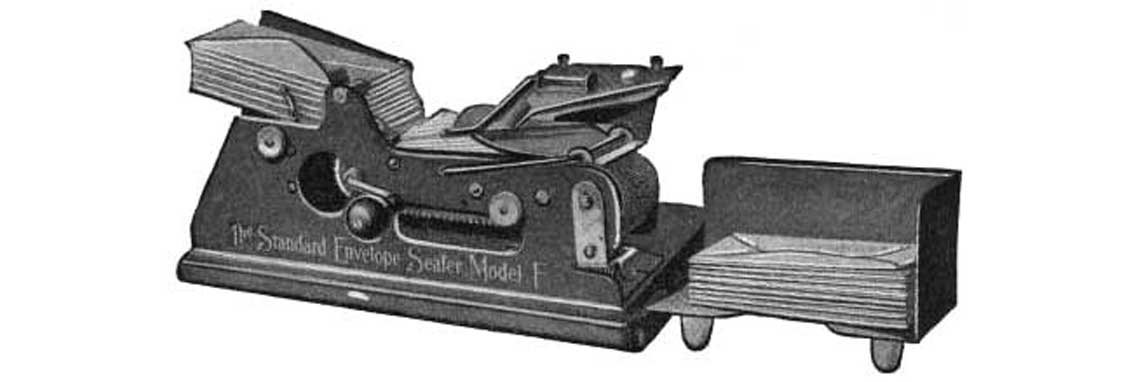
once such machines produced in large quantities. Nobody knows, are these used now?
5.This apparatus is the functional opposite of the envelope sealer. Envelope opener . See the sheets on the right? Envelopes for automatic opening. By the way, this is a Lightning brand envelope opener.
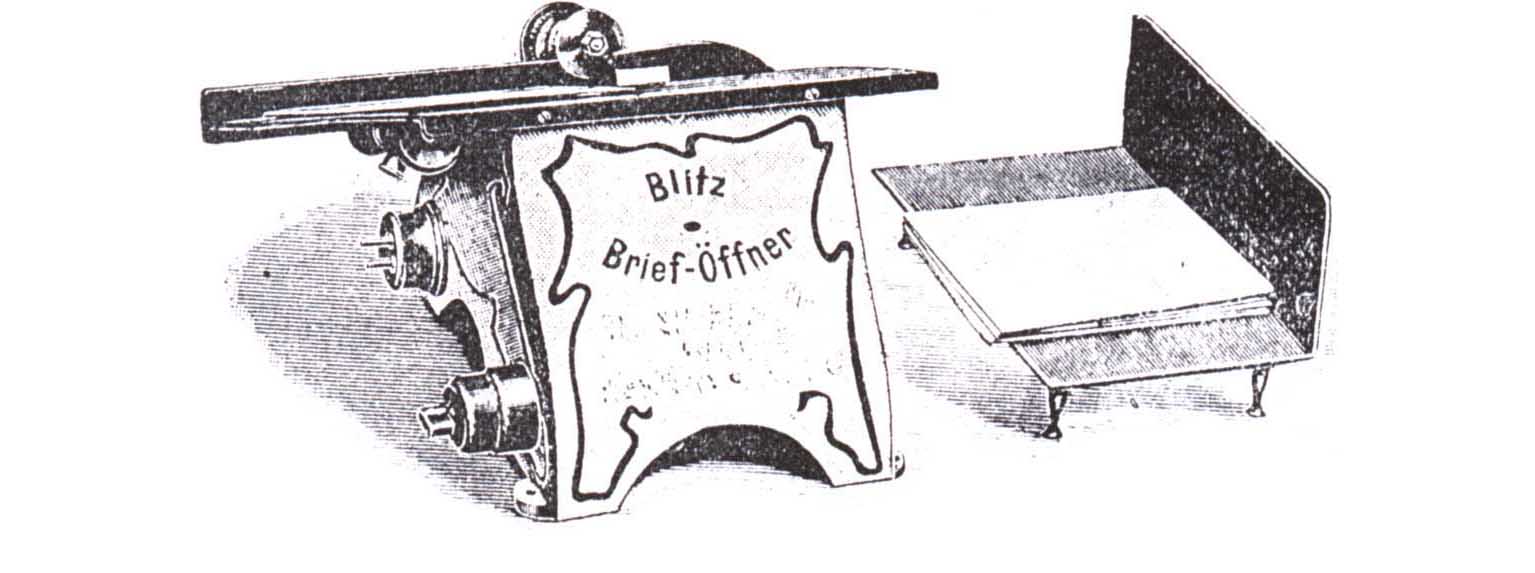
Other similar devices.
Konvertovskryvatel brand "Tom" :
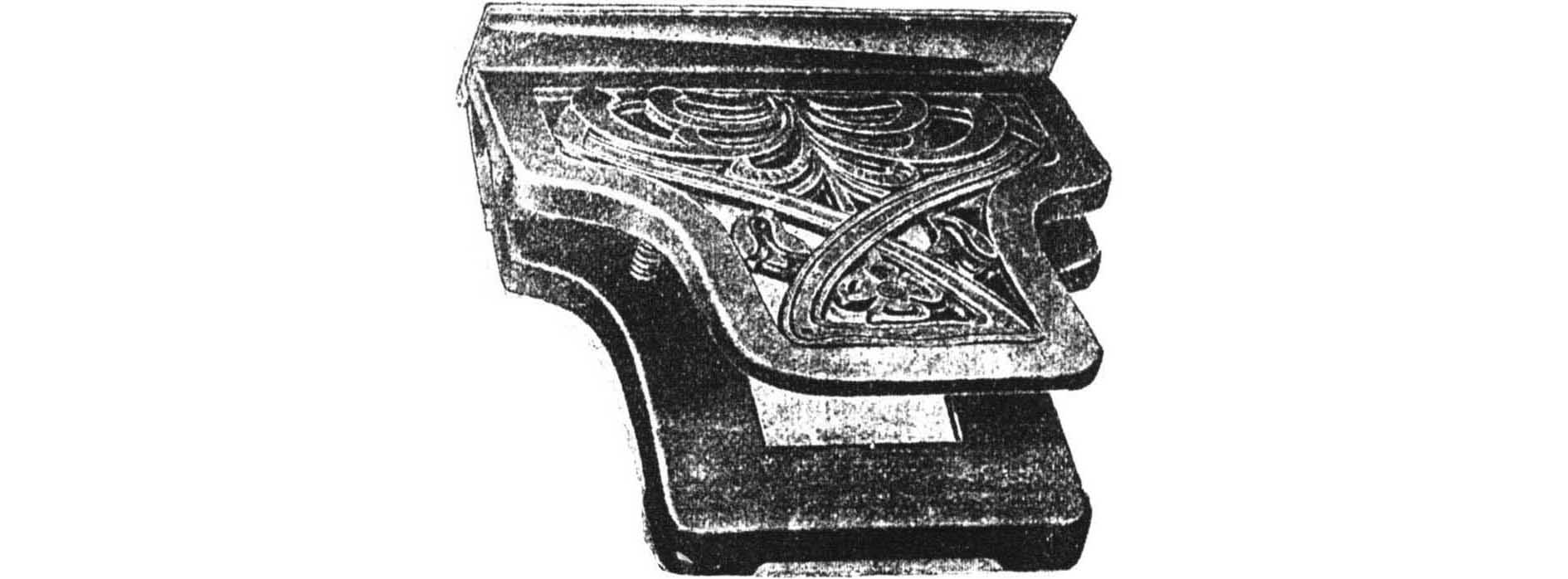
Konvertovskryvatel Orgstroya :
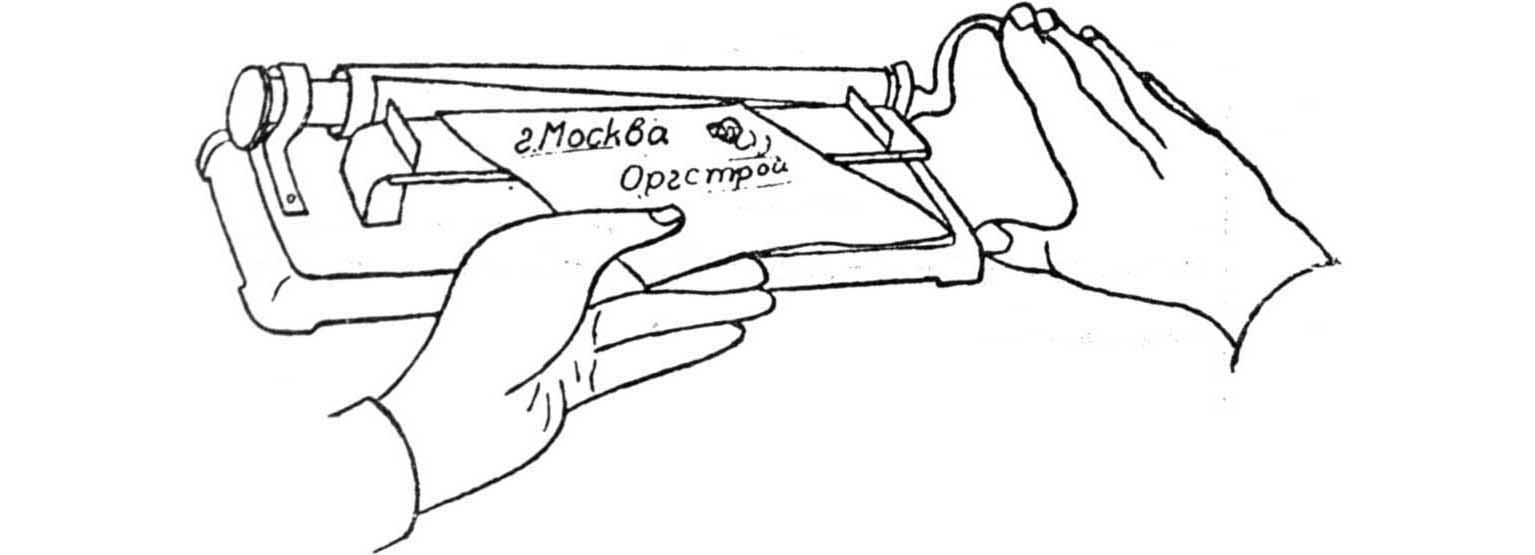
Konvertovskryvatel brand "Bircher" :

I wonder why not use shears? Are there really such institutions in which the opening of letters is put on such a wide foot that it is necessary to automate?
6. And this is an automatic pencil sharpener .
Here are the other sharpeners we managed to find:
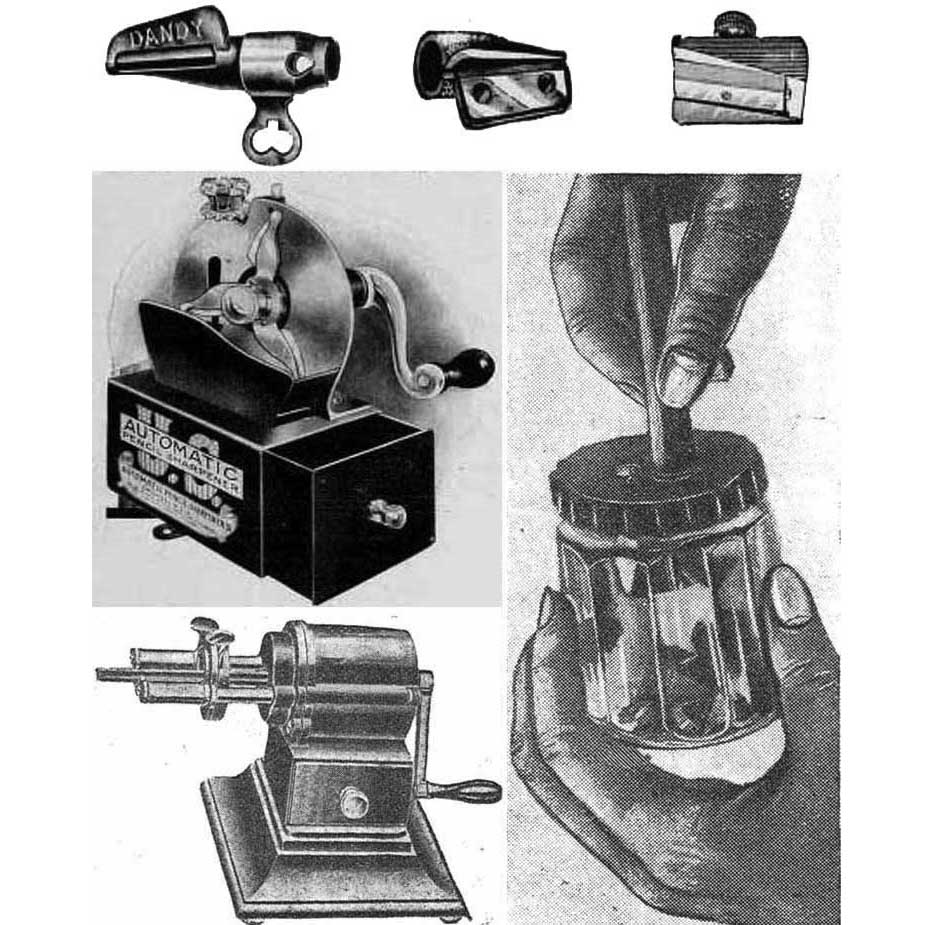
On the right is an almost modern version, I used a similar sharpener.
7. A mysterious little thing, huh?
Just an inkwell , again of an unusual shape and double.
I have other ink tanks, too, not without quirks.
Starting from simpler:

ending to more complicated:

8. The photo is bad. But if you say that it very much resembles a sewing machine, you will hardly be mistaken.
This is an office stapler . Apparently powerful: manual staplers were used more often - such, for example:


9. The most mysterious - so much that it does not even have a Russian name. The English name, which is not without difficulty considered in the image: Measuregraph .
Measuregraph was used in haberdashery stores to measure released fabric. The fabric was inserted into the slot and stretched through the machine, the dial showed the length.
The original source said that the seller, setting the price per unit length, could see not only the length of the cut, but also the cost of the goods sold. I do not know. The watch dial is not convenient for displaying the cost, in my opinion. And the second dial is clearly the same, only turned in the opposite direction - for the buyer, apparently. Perhaps the sum counter was located between them, but it is not visible in the picture well.
Used for identification. A wand was taken, arbitrary nicks were carved on it, then the wand was split along. In order for the owners of two parts to recognize each other, it was enough to fold the wand: if the parts coincided, the identification was considered successful. Impossible to fake, as you know.
Instead of sticks, coins and other items could be used. Spy equipment, in short: you could see that in the movies.
Specifically, this peaceful draw was used to pass the sheepskin. One of the parts was tied to a sheepskin, which was handed over for dressing, so that at the end of processing the peasant could identify his sheepskin. Of course, the master of dressing hides could freely bandage the sticks on the sheepskin, but isn’t it - better than nothing?

2. Just an eraser . And below, as I understand it, a brush to sweep away the crumbs.
I have these erasers heaped, there are round ones, but with a brush only one.

3. Paper clip. Unusual shape in the form of a hand - the hand also confuses.
Here are the clips of more understandable forms:

And this is the desktop version:

4.It’s hard to guess, especially since the photo is bad. Almost an arithmometer, only without a keyboard.
This is an envelope sealer .
Full mechanization of work with envelopes. In the first quick-witted test, devices were used to wet envelopes, and these machines, as I understand it, glued wet envelopes by pressing.
Here are other similar devices.
Konvertozakleivatel "Velopost" :

Konvertozakleivatel "Ado" :

Konvertozakleivatel unknown grade (Model F, as it is possible to read on the instrument side):

once such machines produced in large quantities. Nobody knows, are these used now?
5.This apparatus is the functional opposite of the envelope sealer. Envelope opener . See the sheets on the right? Envelopes for automatic opening. By the way, this is a Lightning brand envelope opener.

Other similar devices.
Konvertovskryvatel brand "Tom" :

Konvertovskryvatel Orgstroya :

Konvertovskryvatel brand "Bircher" :

I wonder why not use shears? Are there really such institutions in which the opening of letters is put on such a wide foot that it is necessary to automate?
6. And this is an automatic pencil sharpener .
Here are the other sharpeners we managed to find:

On the right is an almost modern version, I used a similar sharpener.
7. A mysterious little thing, huh?
Just an inkwell , again of an unusual shape and double.
I have other ink tanks, too, not without quirks.
Starting from simpler:

ending to more complicated:

8. The photo is bad. But if you say that it very much resembles a sewing machine, you will hardly be mistaken.
This is an office stapler . Apparently powerful: manual staplers were used more often - such, for example:


9. The most mysterious - so much that it does not even have a Russian name. The English name, which is not without difficulty considered in the image: Measuregraph .
Measuregraph was used in haberdashery stores to measure released fabric. The fabric was inserted into the slot and stretched through the machine, the dial showed the length.
The original source said that the seller, setting the price per unit length, could see not only the length of the cut, but also the cost of the goods sold. I do not know. The watch dial is not convenient for displaying the cost, in my opinion. And the second dial is clearly the same, only turned in the opposite direction - for the buyer, apparently. Perhaps the sum counter was located between them, but it is not visible in the picture well.
I am sure that when you guessed the proposed devices you did not experience difficulties. Thanks for the quick wits.
